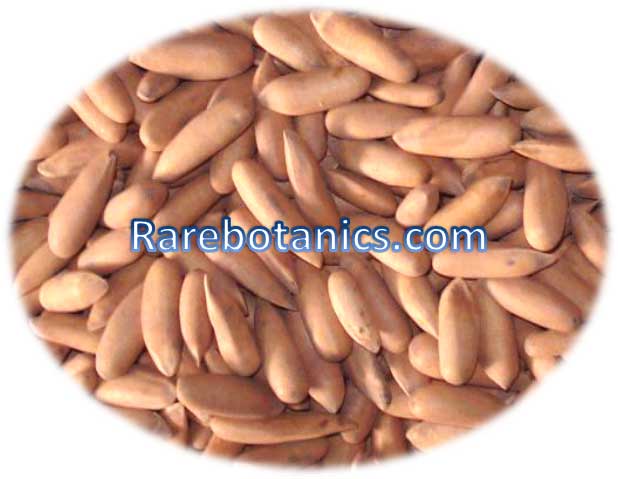Dried Figs (Anjeer) What are figs?
The figs are soft and bulbous fruits that comes from the Ficus trees. The common fig (Ficus carica) belongs to Moraceae family and popularly known as “Anjeer”. They are native to Western Asia and Mediterranean (from Afghanistan to Portugal). The figs are the one of the five fruits which cited in the Holy Quran in a separate chapter (Surah al Teen) along with dates, grapes, pomegranate and olives. The Prophet Muhammad (S.A.W) mentioned, “Eat figs! If I would say a certain type of fruit was sent down to us from the heavens I would say it’s a fig because it has no stones. It ends the piles and is useful for rheumatism”. They contains hundreds of tiny edible seeds that are appreciated as nutrient diet. They can be consumed both in fresh and dried conditions as a healthy snack. Their sweetness and unique texture makes them an amazing addition to sweet dishes.They are being utilized in various food products such as jams, jellies, cakes, breads, puddings and garnishes. The Afghanistani variety of figs obtained from Ficuspalmata is considered more sweet and healthy in diet as compared to Pakistani varieties. The world major producer of figs are Mediterranean countries such as Turkey and Algeria.
Figs Varieties
There are more than 470 varieties of edible figs grown in different areas of world. They are mostly cultivated into two varieties on the basis of their skin colour i.e. light skin fig varieties (includes, yellow, yellow-green or green color) and dark skin fig varieties (includes, red, purple, black or brown skin color). The famous varieties that are grown commercially are Celeste, Brown Turkey, Brunswick, Marseilles, Adriatic, Genoa and Black Ischia. The annual fig production in Pakistan in 2014 was 459 tons. The Black Mission and Brown Turkey are the two major varieties being cultivated in Pakistan.
- Black Mission Figs:The black mission figs are small with pink flesh and dark purple skin that turned black with dried. They have rich and gummy texture with sweet flavor.
- Brown Turkey Figs:The brown Turkey figs are the most popular type of figs. They are moist, large, maple brown in colour and have light amber flesh. They are sweet and mellow in flavor.
Figs Nutritional health benefits
- Dried figs are a rich source of essential fatty acids (omega 3 & omega 6) which lower the cholesterol levels and prevent heart diseases.
- Roasted figs have added to coffee which is called Viennese coffee.
- They are the important source of carbohydrates, amino acids and vitamins like B₁, B₂, B₆ and C which cure various disorders.
- They have phenols,anthocyanins, flavonoids and fibers such as pectin which reduces cardiovascular disorders.
- They are rich in antioxidants which protect cells from free radicals damage.
- They are also rich in mineral content such as calcium, potassium, iron, magnesium and copper that supports bone development and regulates blood pressure.
- They are the good source of prebiotics which stimulates helpful bacteria in the gut and promotes digestion.
- They are used in traditional medicines to treat indigestion, loss of appetite, colic, diarrhea, cough, sore throat and bronchial problems.
- They help us to shed weight, have a peaceful sleep, improves the functioning of kidneys and reduces the risks of cancer.
- They are also used as mild laxative, diuretic, expectorant and cured spleen and liver disorders.
- Fruit juice mixed with honey is used to treat haemorrhage while its paste is applied to tumors and inflammations to reduce pain.
Drying of Figs
Drying process of figs is the most effective way of preservation of figs that reduces microbial activity and minimizes the chemical & physical changes. Pre-drying treatment includes blanching of figs in boiling water up to 1 minute which reduce infestation and improves its texture. Then the figs are dried in the sun by placing them in one layer on wooden drying trays. These trays are placed in the sun exposed open area away from dust and infection. The figs are usually dried for 3-5 days until the water content in them reached to 18-22% depending on the weather. Another method of drying figs is “solar drying method” which is more sophisticated than sun drying traditional method. This method include dehydration of figs within a plastic or glass covered space and reduces the risk of contamination. The solar drying is 3 times faster than the traditional sun drying method however the sun dried figs are better scores in taste test.
Storage of Figs
Figs are highly perishable therefore they limits storage for long periods. They can be stored mostly in dried conditions in refrigerators up to 3-6 months. They can also be stored for longer period up to a year in a freezer by storing them into airtight bags or container. They are slightly sensitive to ethylene action which stimulates softening and decay severity in them. The cause of figs damage is the attack of microbial molds and rots which take advantage of smashed epidermis and high content sugar. The use of SO₂ can control the postharvest rots and increase the market value of fresh figs.
Specification
| 1) Off-White Figs Larger Size 100 Grams = ~12 Counts Color 90% Off-White 10% Light Brown Medium Size: 100 Grams = ~18 Counts Color: 90% Off-White 10% Light Brown Harvesting Time: October Availability : October to February |
 |
| 2) Light Brown Figs Larger Size: 100 Grams = ~12 Counts Medium Size: 100 Grams = ~18 Counts Harvesting Time: October Availability: October to February |
 |
Figs Packaging
Inner Packaging:: 20 Kg Carton Loose Packaging:
Outer Packaging:: 20 Kg Wooden Box. Inner Plastic in the Cotton Cloth and
Jute Packing
Quantity Available:
500 Metric Tonnes








Reviews
There are no reviews yet.